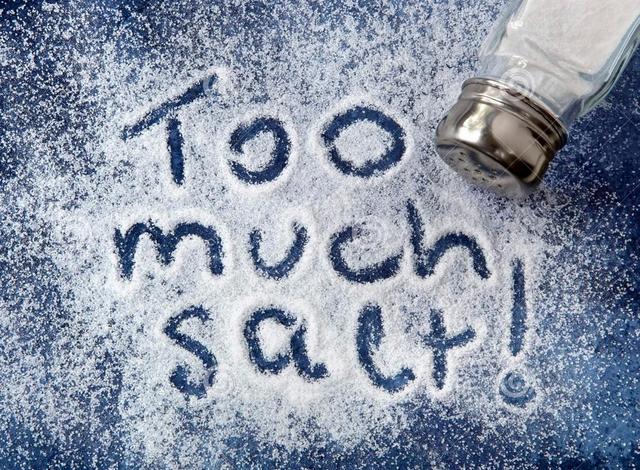Salt consumption exceeds national and World Health Organization guidelines in most countries, but only the highest-sodium diets, such as in China, are linked to clear health risks, researchers said.
大多数国家居民的盐摄入量都超过国家和世界卫生组织指导量,不过,研究人员表示,只有钠含量非常高的饮食——例如中餐,才明确与健康风险有关。
Only individuals with a daily salt intake of at least 12.5 grams -- about two-and-a-half teaspoons -- were associated with increased blood pressure and a greater risk of stroke, they reported in The Lancet, a medical journal.
研究发现,只有每日盐摄入量达到12.5克(约两茶勺半)以上的个体才伴有血压增高、中风可能性加大的危险。该研究结果发表在医学刊物《柳叶刀》上。
WHO recommends capping salt consumption at five grams per day, but this target is not known to have been achieved at a national level anywhere in the world, the survey of more than 90,000 people spread across 300 distinct communities in 18 countries found.
调查发现,尽管世卫组织建议每日盐摄入量不超过5克,但目前世界上还没有哪个国家能达到这一目标。超过9万人参与了这项调查,他们来自18个国家的300个不同社区。
"We should be far more concerned about targeting communities and countries with high average sodium intake -- above five grams (equivalent to 12.5 grams of salt), such as China -- and bringing them down to the moderate range" of 7.5 to 12.5 grams of salt, said lead author Andre Mente, a professor in the Population Health Research Institute at McMaster University in Canada.
研究报告的主要作者、加拿大麦克马斯特大学人口健康研究所的安德烈·门特教授说:“我们应该更加关注平均钠摄入量高的团体和国家,即日均钠摄入量超过5克(相当于12.5克盐)国家,比如中国,应将他们的摄入量降至适当范围内,即日均摄入7.5克至12.5克食盐。”
One gram of sodium equals 2.5 grams of salt.
1克钠相当于2.5克食盐。
Four-fifths of the groups examined in China had average daily salt intake of 12.5 grams, whereas in other countries 84 percent ingested between 7.5 and 12.5 grams.
在参与调查的中国人中,有五分之四日均盐摄入量为12.5克,而其他国家84%的人日均盐摄入量在7.5克至12.5克之间。
"Our study adds to growing evidence that, at moderate intake, sodium may have a beneficial role in cardiovascular heath, but a potentially more harmful role when intake is very high or very low," he said in a statement.
安德烈·门特在声明中表示:“我们的研究进一步证明,在适量摄入的情况下,钠对心血管健康有利,但是如果摄入量极高或极低的话,可能存在更为有害的影响。”
The human body needs essential nutrients such as sodium and many vitamins, but the ideal amount remains subject to debate.
人体需要钠和多种维生素等必要营养物质,但这些物质的理想摄入量还没有定论。
The study examined urine and blood samples, along with health records, for 95,767 women and men monitored over an eight-year period.
研究人员在8年的时间里对95767名男女进行了监测,检验了他们的尿液和血液样本以及健康数据。
Nearly 3,700 of the participants died during that time and 3,543 had "major cardiovascular events".
研究期间,近3700名参与者离世,3543人患有“严重心血管疾病”。
Experts not involved in the study were sharply critical of its methodology. The technique for collecting urine samples is notoriously unreliable, they noted. And the fact that it was an observational study -- as opposed to clinical trials -- means that no firm conclusions can be drawn as to cause-and-effect.
未参与这项研究的专家严厉批评了这种方法论,他们指出,搜集尿液样本的方法非常不可靠,且这种方法实际上是观察性研究,而不是临床试验,这意味着无法得出确定的因果结论。

Most controversial was the suggestion that low sodium intake may, in fact, provoke heart disease.
研究认为,低钠摄入量实际上会引发心脏疾病,大多数争议也正集中于此。
"There are no known mechanisms that could explain this observation," commented Tom Sanders, professor emeritus of nutrition and dietetics at King's College London.
伦敦大学国王学院营养学和饮食学荣誉教授汤姆·桑德斯评论称:“现有机制无法解释这种观察现象。”
"Sodium is an essential nutrient but the requirement is very low at about 0.5 grams (1.25 grams of salt) per day."
“钠是一种必要营养成分,但是需求量非常低,每天约0.5克(相当于1.25克食盐)。”
Ageing populations, he added, should still be advised to restrict the addition of salt to food.
他补充说,还是要建议老年人控制盐摄入量。













